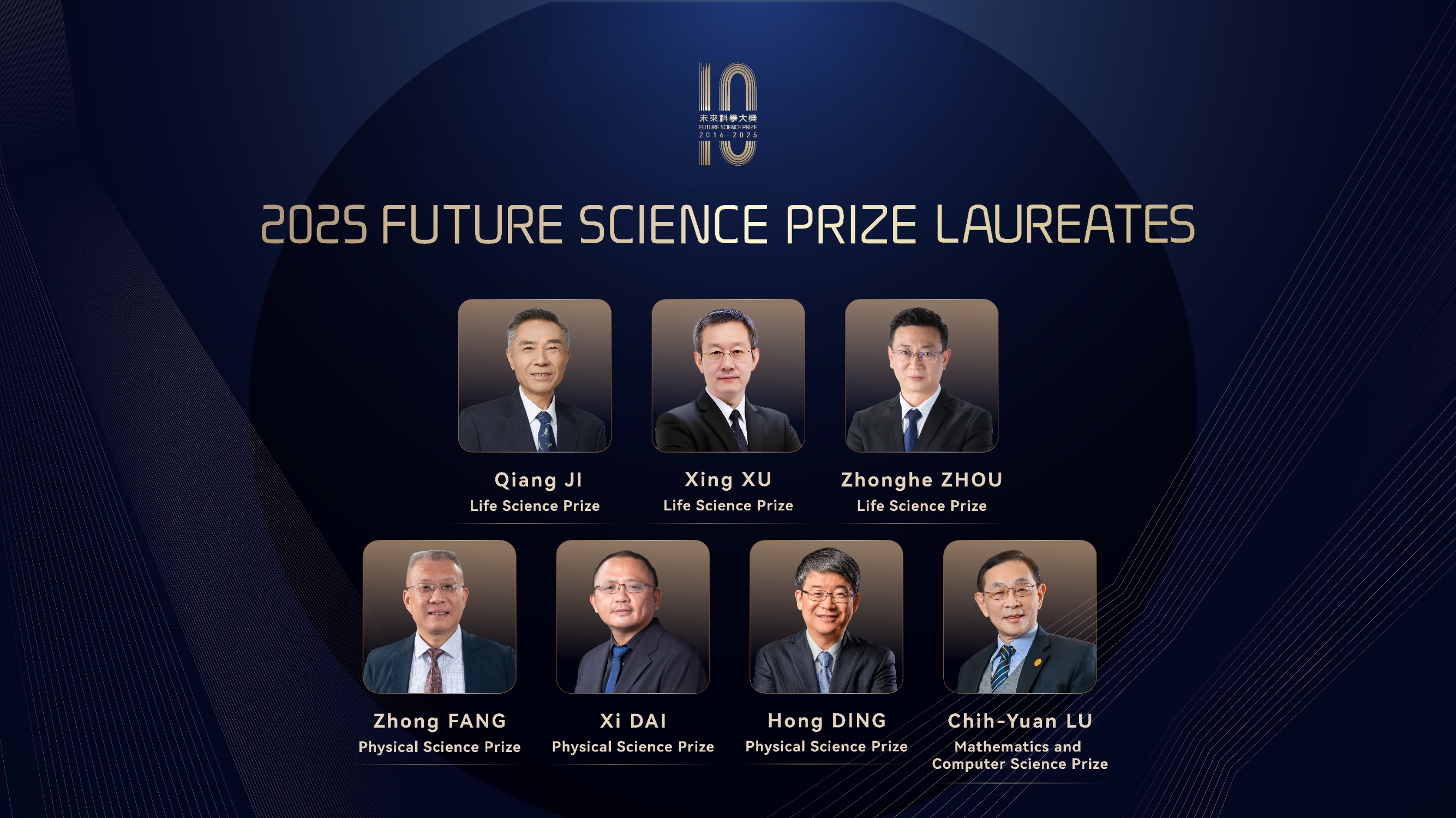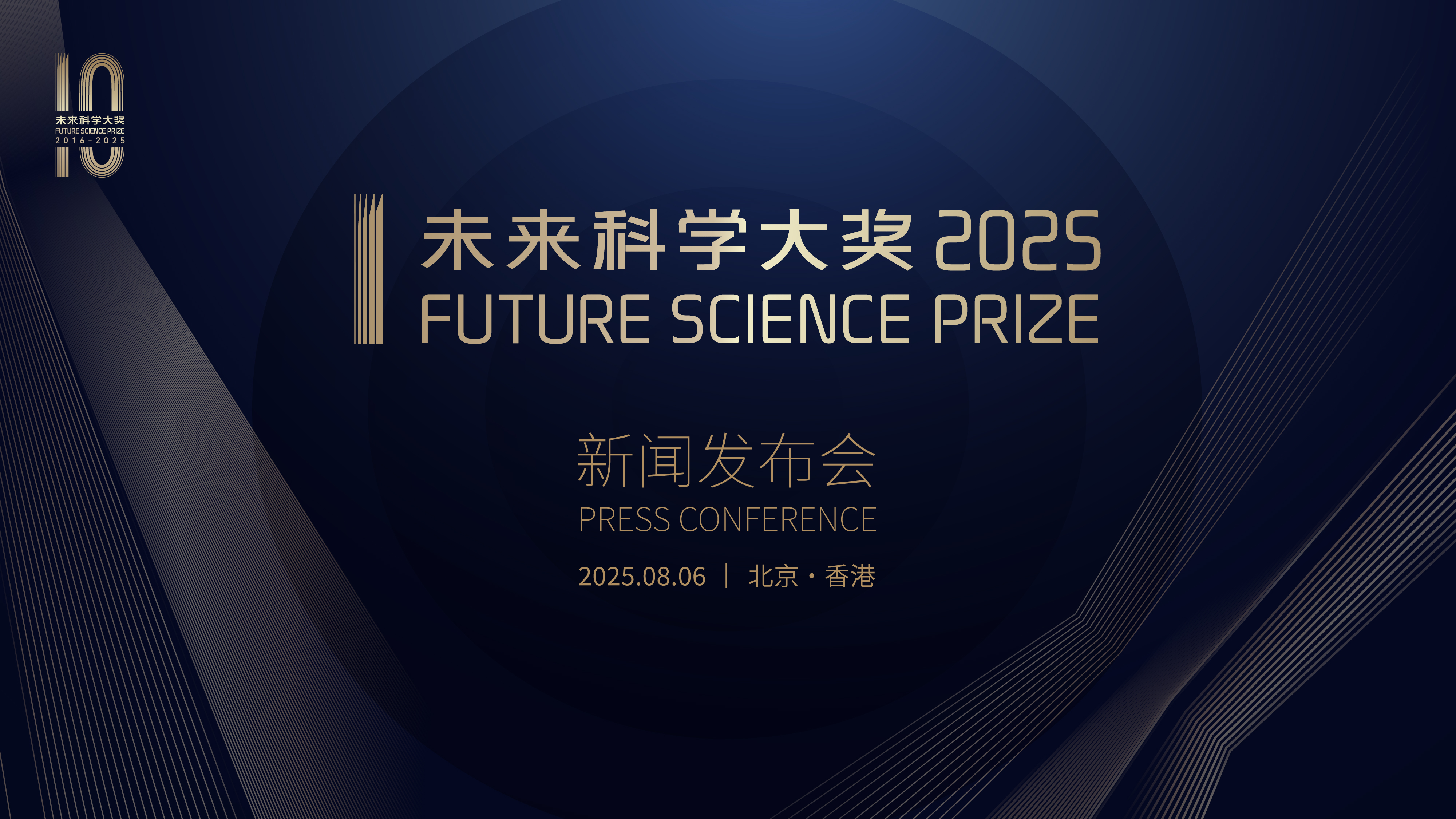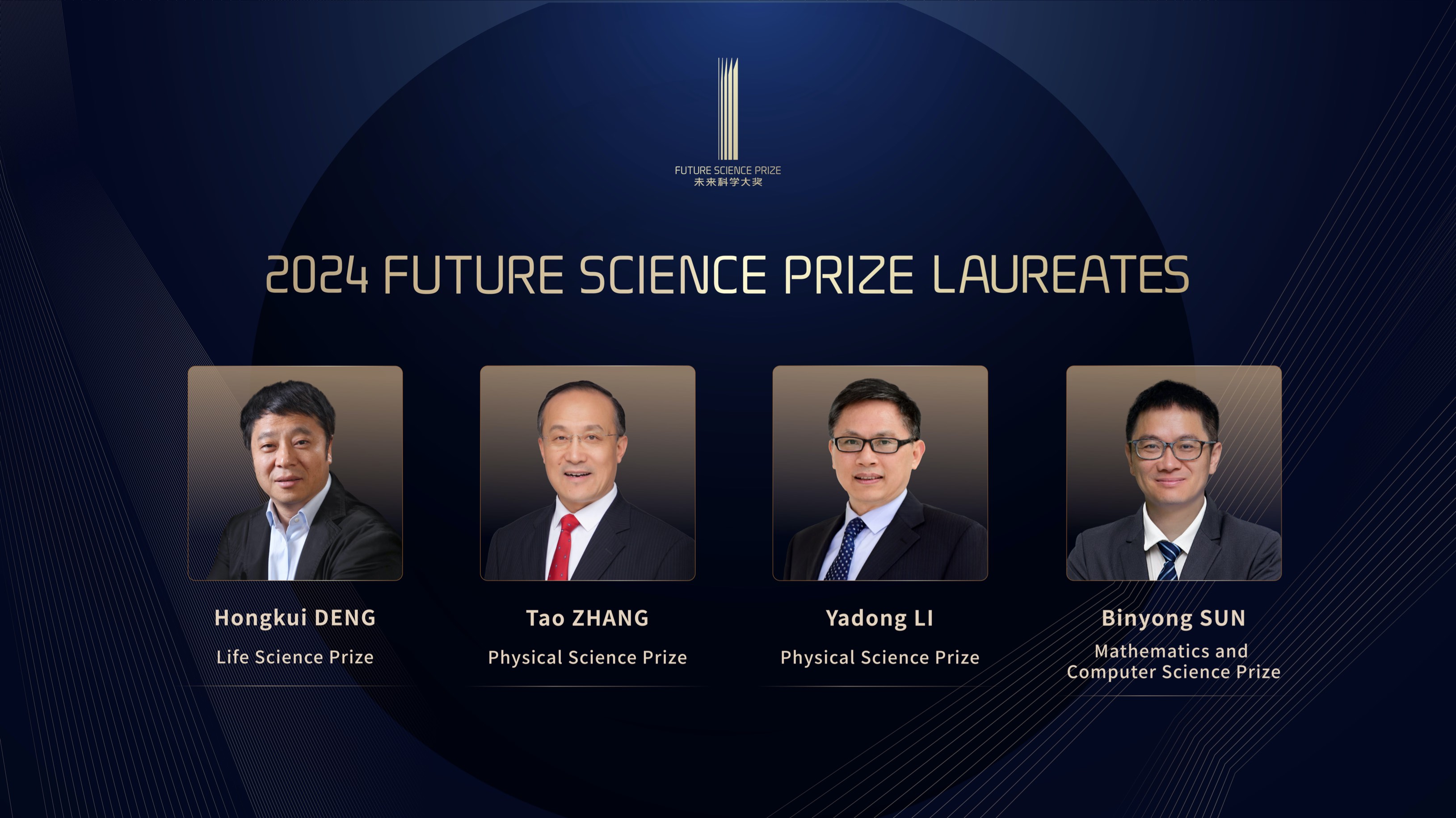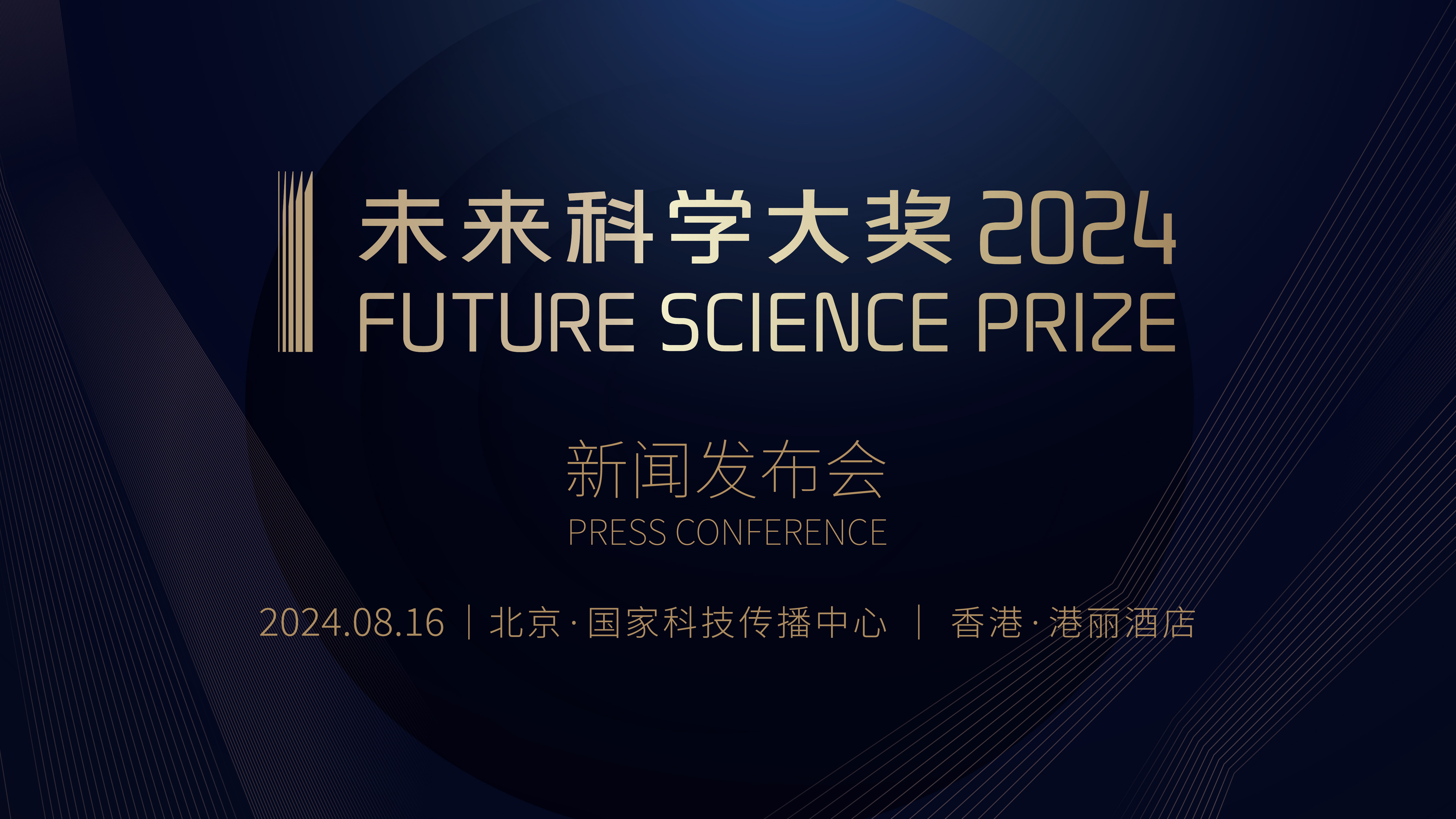Future Science Prize announced the winners of 2021 in Beijing on September 12th. Prof. Kwok-Yung Yuen and Prof. Joseph Sriyal Malik Peiris won the Future Prize in Life Sciences for their discoveries of SARS-CoV-1 as the causative agent for the global SARS outbreak in 2003 and its zoonotic origin, with impact on combating Covid-19 and emerging infectious diseases. Prof. Jie Zhang won the Future Science Prize in Physical Sciences for his development of laser-based fast electron beam technologies and their applications in ultrafast time-resolved electron microscopy and fast ignition for research towards inertial confinement fusion. Prof. Simon Sze won the Future Prize in Mathematics and Computer sciences, for his contributions to understanding carrier transports at the interface between metal and semiconductor, enabling Ohmic and Schottky-contact formations for scaling integrated circuits at the “Moore’s law” rate during the past five decades.
2021 Future Science Prize - Life Science Prize


Kwok-Yung Yuen, The University of Hong Kong
Joseph Sriyal Malik Peiris, The University of Hong Kong
Citation: For their discoveries of as the causative agent for the global SARS outbreak in 2003 and its zoonotic origin, with impact on combating Covid-19 and emerging infectious diseases.
During the outbreak of severe acute respiratory syndrome (SAR) in 2003, Kwok-Yung Yuen, Joseph Sriyal Malik Peiris and their team treated the first patients in Hong Kong and isolated SARS-CoV-1 from their clinical specimens, which was critical to the design of diagnostic tests and disease characterization (Lancet April 19, 2003). In addition, Kwok-Yung Yuen’s continued studies on SARS-like viruses in wild bats greatly increased our knowledge of zoonotic reservoirs, barriers to cross-species transmission, pathogenesis, and clinical diagnosis of these viruses. Because of the high prevalence of SARS-like coronavirus in bats, the discovery predicted the potential re-emergence of a SARS-like epidemic and stressed the importance of public health preparedness. As predicted, the bat coronavirus HKU4/5 was found to be closely related to MERS-CoV that caused the epidemic Middle East respiratory syndrome.
In summary, Kwok-Yung Yuen and Joseph Sriyal Malik Peiris have made seminal contributions to our understanding of emerging infectious diseases from SARS in 2003 to COVID-19, which led to more effective responses and strategies in controlling these diseases.
Kwok-Yung Yuen, born in 1956 in Hong Kong, China, obtained his Ph.D. from the University of Hong Kong in 1998, is currently a professor at the University of Hong Kong.
Joseph Sriyal Malik Peiris, born in 1949 in Sri Lanka, obtained his Ph.D. from the University of Oxford in 1981, is currently a professor at the University of Hong Kong.
2021 Future Science Prize - Physical Science Prize


Jie Zhang
Shanghai Jiao Tong University/ Institute of Physics, CAS
Citation: For his development of laser-based fast electron beam technologies and their applications in ultrafast time-resolved electron microscopy and fast ignition for research towards inertial confinement fusion.
Ever since the discovery of cathode rays by J. J. Thomson, electron beams have played increasingly prominent roles in science and technology for over a century. Development of various electron microscopes has provided illuminating visions of the inner core of matter, from material crystalline structure to the quarks and gluons in protons and neutrons. Energetic electron beams have enabled precise sculpting of structure and novel modifications of material properties.
Dr. Jie Zhang is a pioneer in developing methods for efficient generation of controlled, high-intensity fast electrons (~100 keV to 10 MeV) through tera- to peta-Watt laser beams. Leading a strong team of collaborators, Zhang has made a series of major breakthroughs with fast electron beams, including efficient generation of nonthermal electrons, tuning the electron beam energy with lasers, realization of highly directional electron emission, and world records on temporal resolution of electron beam imaging.
The precisely controlled high-intensity fast electrons generated by Dr. Zhang’s team have enabled a range of other important scientific explorations. For example, they have developed an MeV ultrafast electron diffraction and imaging facility, and demonstrated sub-Angstrom spatial resolution and a record 50 femtosecond temporal resolution. Very recently, they used ultrafast laser-field to successfully manipulate electronic dimensionality of quantum materials and observed signatures of novel phase transitions induced by light. Furthermore, the cutting-edge technology has helped the team design a more compact and efficient high-energy particle accelerator. Simultaneously, they have also achieved single molecule imaging with ultrafast electron diffraction.
Dr. Zhang’s research on fast electron beams was initially driven by the prospect of inertial confinement fusion (ICF), a process, if realized, could provide unlimited energy supply for the human kind. The new electron source provides a crucial tool for ICF with fast ignition, a concept pioneered by Dr. Zhang. The fast ignition approach disentangles fuel ignition from compression, allowing optimization of these two processes independently while avoiding instabilities.
Jie Zhang, born in 1958 in Shanxi, China. Ph.D. 1988 from the Institute of Physics, Chinese Academy of Sciences. Professor at Shanghai Jiao Tong University and Institute of Physics, Chinese Academy of Sciences.
2021 Future Science Prize - Mathematics and Computer Science Prize


Simon Sze
Life-time Chair Professor, Department of Electronics Engineering
Yang Ming Chiao Tung University
Citation: For his contributions to understanding carrier transports at the interface between metal and semiconductor, enabling Ohmic and Schottky-contact formations for scaling integrated circuits at the “Moore’s law” rate during the past five decades.
Prof. Simon Sze has made pioneering contributions to inter-metal/semiconductor carrier transports for semiconductor devices, including both analytical and experimental investigations to Ohmic and Schottky contact behaviors over extensive doping(1014-1020/cm3) and operating temperature ranges (Si: 77K-373K; GaAs: 50K-500K) by simultaneously addressing effects of quantum mechanical tunneling, thermionic emission, image-force lowering and two-dimensional statistical impurity variations across the metal/semiconductor interface barriers. These discoveries not only established the scientific basis but also guided the practical implementations of both contact types over the entire family of modern semiconductor devices, enabling continuous scaling of ICs for computing, communication, sensing, control, imaging and memory applications during the past five decades, with immeasurably large impact to human lives and civilization.
Simon Sze was Born in Nanjing and grew up in Taiwan. After graduating from the Taiwan University in 1957, he received his M.S. from the University of Washington in 1960 and Ph.D. from Stanford in 1963. He co-discovered the effect of floating gate memory with Dr. Dawon Kahng in the US in 1967, which is the key invention of non-volatile memories including the flash memory. He conducted this awarded research work on Ohmic and Schottky contacts at the Chiao Tung University (Today’s Yang Ming Chiao Tung University) during 1968-1969.
He has also authored a legendary research monograph “Physics of Semiconductor Devices,” which is a “Must Study” and has been constantly used and referenced by worldwide semiconductor and integrated circuit researchers, graduate school faculty/students, and engineers across the entire electronic and photonic industry.
The Future Science Prize is a privately-funded science award initiated by a group of scientists and entrepreneurs. It was established in 2016 to award those scientists whose original research, conducted mainly in the Mainland of China, Hong Kong, Macao, or Taiwan, has made a significant impact on the international science community, and has passed the test of time, regardless of their nationality, gender, or age.
The nomination and selection process of the Prize was established in according with the Nobel Prize system: the Science Committee of the Future Science Prize invites international experts as nominators. After receiving confidential nominations, the committee solicits evaluation letters from international experts in the relevant fields of the nominated work. Basing on the evaluations, the committee then votes to select the final award winners. A regulatory committee is established, with the law school professor Xiqing Gao from the University of International Business as its chairman, and supervises the entire award selection process.
The cash award for the Future Science Prize in each category is 1 million US dollars (approximately 6.5 million Chinese Yuan), each donated by four individual philanthropists. The donors for the Life Science Prize are James Ding, Robin Li, Neil Shen and Lei Zhang. The donors for the Physical Science Prize are Feng Deng, Yajun Wu, Ying Wu and Bob Xu. The donors for Mathematics and Computer Science Prize are William Ding, Jason Jiang, Pony Ma and Victor Wang.
The award ceremony of the 2021 Future Science Prize will be held in Beijing on November 21st , the final day of the Future Science Prize Week.(end)







